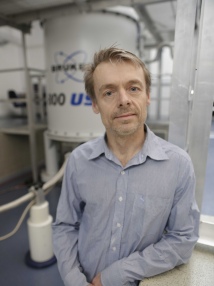Overview
I have published over 60 papers during the last five years, marrying new biological insight with quantitative and structural data. A major focus of my group is a better understanding of the interplay between pathogenic organisms, their hosts and the environment, and defining molecular mechanisms relevant to disease. Relevant to my Investigator funding, we have made significant progress in or understanding of the biogenesis and architecture of protein fibres in bacterial biofilms. We solved the structure of the first curli gene and characterised a new role in the inhibition of premature amyloid formation (Mol Cell 2015, Sci Reports 2016, Structure 2012, Acta D 2012). In our recent work, we uncovered a novel, hybrid secretion system of bacterial amyloids in Pseudomonas (Nature Comms 2017, Acta D 2016, J. Mol. Biol. 2018a,b). We have also shed new light on amyloid assembly in other contexts (PloS Pathogen2015 & 2016) and their exploitation in biotechnology (Chemistry Materials 2017). Furthermore, we proposed a new structural model for inter-bacteria communication during E. coli biofilm formation (PNAS 2012), and defined how Neisseria type IV pili recognise extracellular DNA (PNAS 2013, Structure 2016). We have also characterised receptor interactions of enteroaggregative E. coli and their roles in biofilm formation (PloS Pathogen 2014 & 2015). Recently, we play a role in the development and data analyses of a new MS method for the study of large intact membrane protein complexes methods (Science 2018).
I have also enjoyed successful collaborations with biologists who wish to complement structural snapshots of protein function from X-ray diffraction and electron microscopy with a dynamic perspective from solution NMR. Examples include NMR analyses SUMO chain are recognition (Nature Comms 2014); mitochondrial phoshatidylinotsitol transfer in humans and (EMBO Reports 2016) and phages control over bacteria (Mol Cell 2010, NAR 2014 & 2017).
Collaborators
University
Crick Institute

